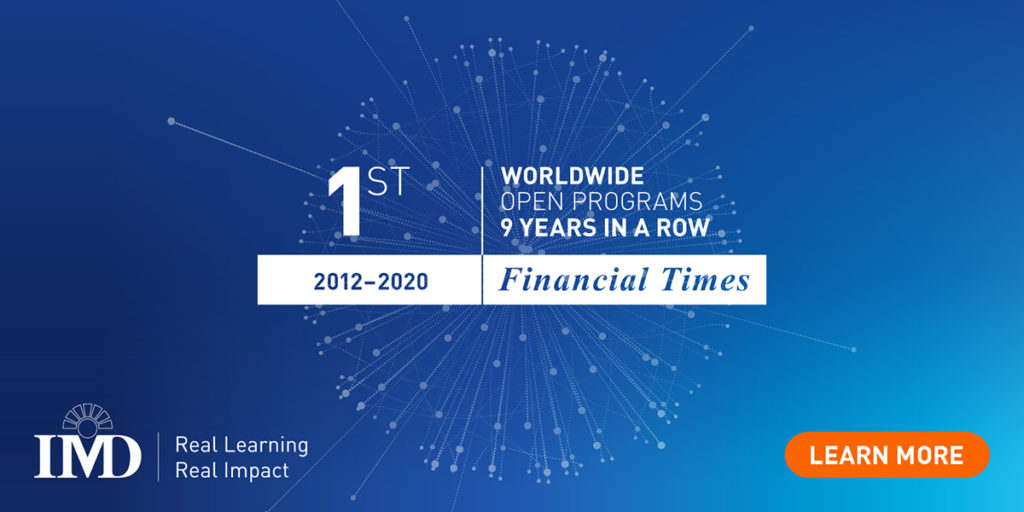Reimagining Work
The starting point for this reimagination is asking: What has operating 100% virtually taught us about what works and what doesn’t? We asked leaders participating in an IMD executive session to complete a survey about this. It validated our own experience working ourselves virtually and leading virtual team and leadership development sessions for our clients.
For 1:1 virtual work, the leaders we spoke to said that interviews, reporting, and coaching all worked well remotely. Most of what needs to be done 1:1 by team leaders with their reports can be done virtually.
But for teamwork, they said just coordination, information-sharing, and making simple decisions work well in the virtual mode. What they reported doesn’t work well are team activities that require deep integration of knowledge and intensive dialogue and debate. These essential team activities are built on a foundation of personal connection and trust that is difficult to foster virtually.
Speaking to these leaders, we found four dimensions of impact in team and leadership development that are difficult to achieve and sustain without being physically together:
- Collaboration
- Innovation
- Acculturation(building a robust culture)
- Dedication(developing a sense of belonging)
These are further developed in our recent HBR Online article, When Do We Really Need Face-to-Face Interactions?
We also have learned that Zoom is a great leveler. In a world where everyone is a tile, geographic proximity and physical size and presence become less critical. This makes it more likely that good ideas and solid thinking will win the day. For this reason, one leader we work with has decided to run all his global team meetings with everyone participating virtually, even when some could be together physically. He believes that hybrid meetings inevitably create an undesirable two-tier power dynamic.
Implications for the future of work
As we move into the post-COVID world of work free of constraints on meeting in person, we expect to see a battle between social forces and economic forces; we believe economics will win in the end. Many people want to go back to working in person for at least some of the time because they miss the sense of connection and social interaction.
But the reality is that productivity is higher, and costs are lower when most employees spend most of their time working remotely. Chief Financial Officers are already looking hungrily at the substantial savings from the reductions in business travel that virtual work makes possible. The even greater potential reductions in real-estate and related costs for employees working virtually rapidly are becoming apparent.
We expect a new equilibrium eventually to be reached in which people come together physically in teams only when doing so creates value – for collaboration, innovation, acculturation, and dedication. Everything else will be done virtually.
As large companies figure out when working in-person does and does not create value, they will move inexorably toward this new equilibrium. Because if they don’t, their competitors will gain an advantage. It will be a sort of race to the bottom, where “the bottom” is a workforce that primarily works remotely.
Implications for managing talent
There will be companies that continue to overly favor in-person work. They will do this because they haven’t confronted the reality that virtual is more productive than in-person for most work. Or they haven’t yet done the necessary analysis and optimization of work given what we have learned. So, there will be an adaptation curve.
Some companies may strategically seek to recruit valuable talent with the promise of more in-person time in teams. Smaller firms, especially creative ones, may decide to operate on a co-located basis and in a way that doesn’t create an undue cost disadvantage. But the economic forces will be hard for large companies to resist for long.
Implications for leadership
The implications for the future of leadership are profound. In our recent article in the Sloan Management Review, The Future of Leadership is Multimodal, we argued that organizations will need leaders who can operate well in two very distinct modes. For much of the time, they will operate in virtual coordination mode. This means establishing goals, monitoring progress, driving information sharing, and sustaining connections among colleagues working remotely. This will include almost all 1:1 oversight and coaching by leaders.
When their teams periodically come to get her in person to engage in deeper work, leaders will need to operate in face-to-face collaboration mode, fostering deep learning, innovation, acculturation, and dedication.
This multimodal work is changing the types of skills required leaders need to be successful. We also identified four roles that leaders will need to play as they adapt to managing a hybrid workforce. We called them Conductor, Catalyst, Coach, and Champion. Their relative importance will depend on the extent of team coordination and integration.
Implications for the future of the office
In the foreseeable future, the office, as we knew it pre-COVID-19, will cease to exist. This follows directly from the logic that most 1:1 work and a lot of coordination work in teams will be done virtually, except in situations where physical work is required, for example, in labs and production facilities.
We will still need collaboration spaces, where teams come together periodically for work focusing on shared learning, innovation, acculturation, and connection, punctuating their routine of distributed virtual work.
Companies will need to have access to high-quality collaboration spaces, which many teams will share, and in which face-to-face meetings will be scheduled and supported.
Ultimately, companies’ essential physical infrastructure will consist of reliable access to collaboration spaces (potentially owned and operated by others). All other work will be done on a distributed, remote basis, either at home or in shared workspaces that people go to near their homes.






 Audio available
Audio available
